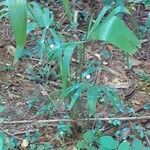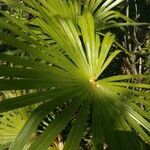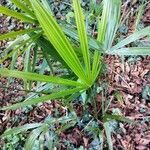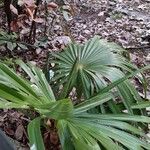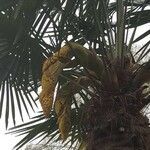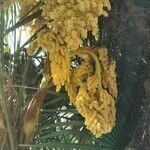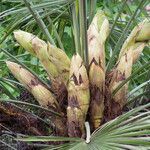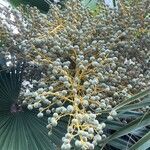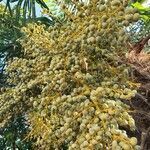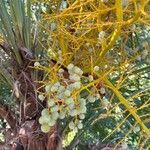Stem solitary, to 12 m tall, to 15 cm in diam. Leaf sheath fibers persistent, forming an ocrea more than 25 cm; petioles to 60 m, margins with very fine teeth; blades semicircular in outline, to 1.2 m wide, green on abaxial surface, divided to ca. 3/4 their length into 40-50 stiff segments, transverse veinlets barely visible; middle segments to 3 cm wide. Inflorescences 0.7-0.9 m, erect; male inflorescences branched to 4 orders; rachillae 1-3 cm; female inflorescences branched to 3 orders; rachillae 3-15 cm. Fruits black with a waxy bloom, kidney-shaped, to 0.9 × 1.4 cm.
Trunk straight, unbranched, from 4-12 m high; upper part covered with dark brown fibrous remains of petiole bases. Leaves fan-shaped, 75 × 100 cm, divided into numerous narrow leaflets pendulous at tip; petioles ± 1 m long with stout sharp marginal teeth, tapering to a broad sheath. Panicle deflexed. Flowers numerous. Drupe globose-reniform, 9 × c. 12 mm, yellow at first, later deep blue-black.
